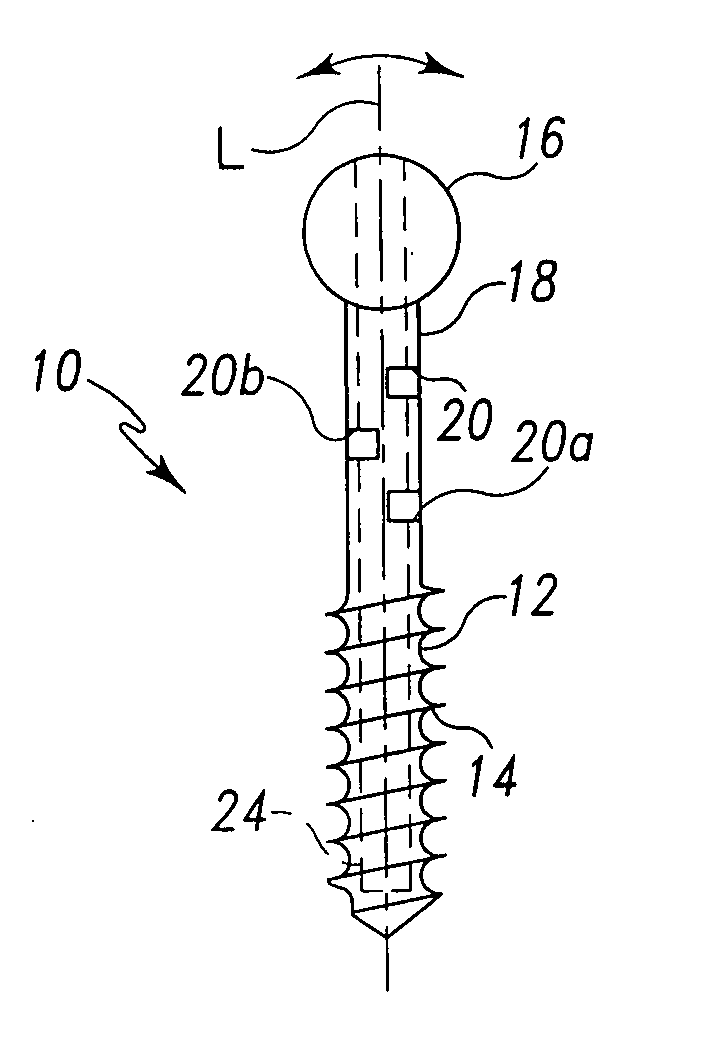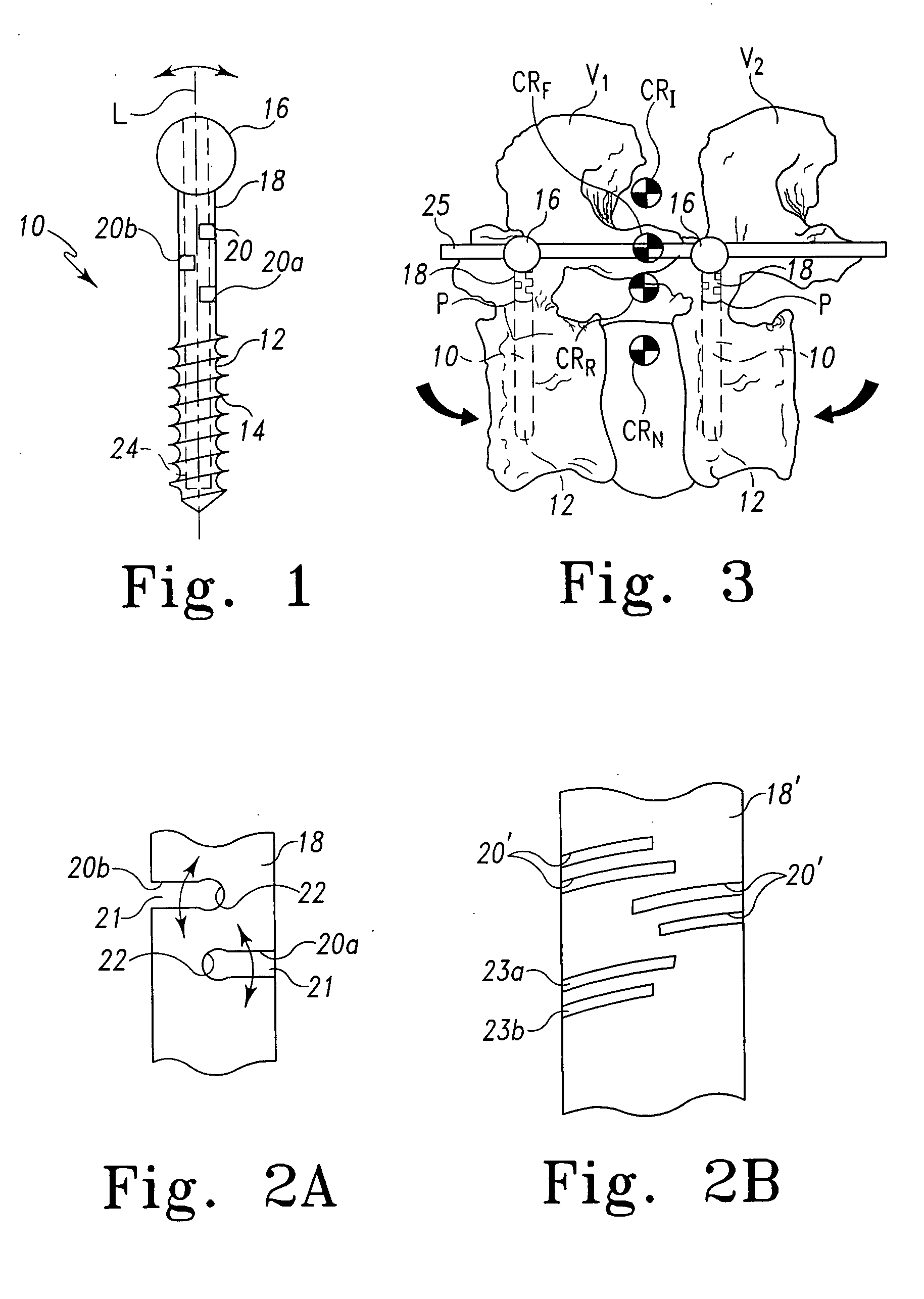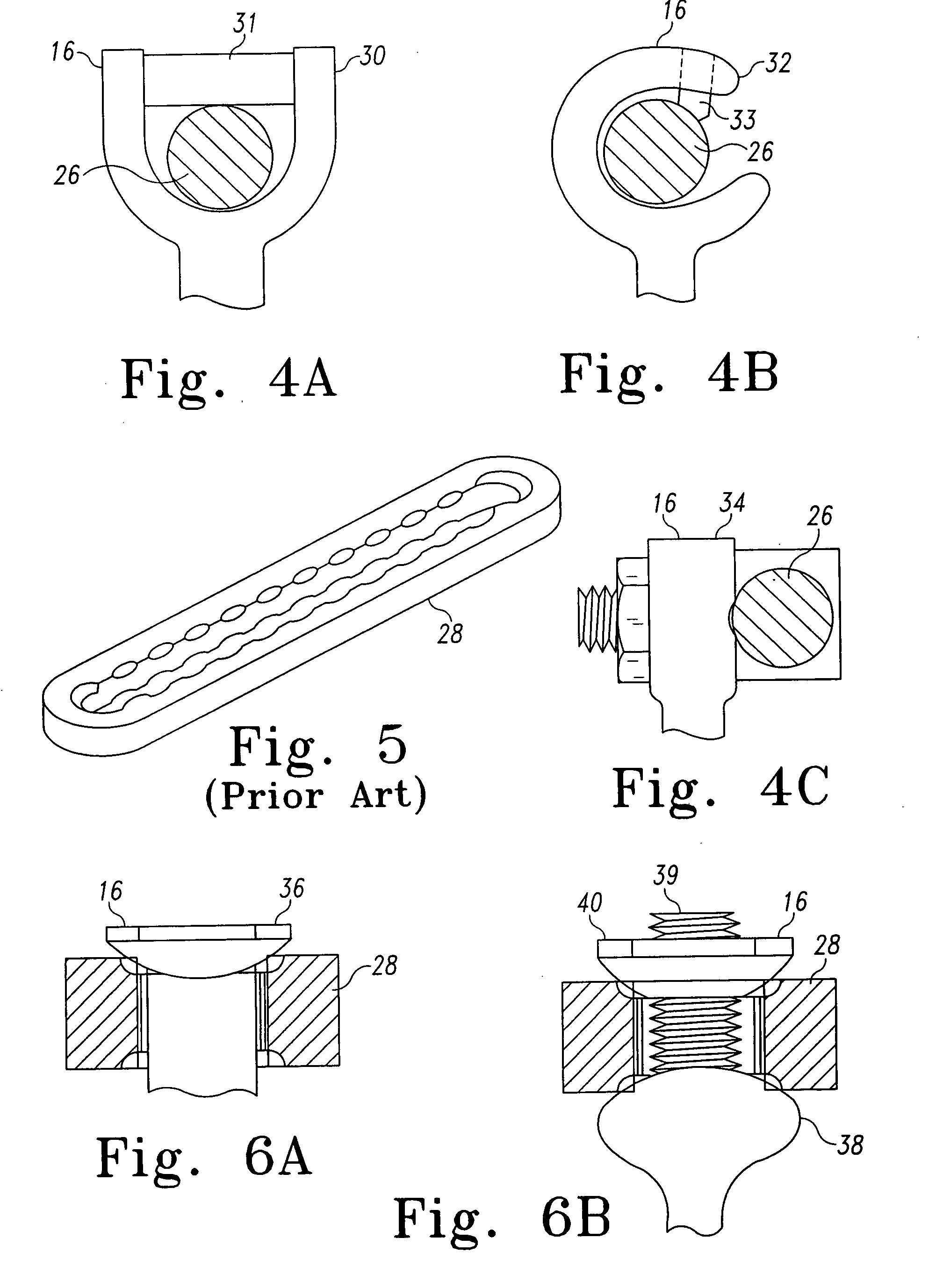Dynamic spinal stabilization system
a spinal stabilization and dynamic technology, applied in the field of spinal implant systems, can solve the problems of inability to alter system is susceptible to overloading the disc annulus, and prior systems are not capable of reducing the stiffness of a segment in various loading modes, so as to prevent bone overgrowth and reduce the cross section
- Summary
- Abstract
- Description
- Claims
- Application Information
AI Technical Summary
Benefits of technology
Problems solved by technology
Method used
Image
Examples
Embodiment Construction
[0053] While the invention has been illustrated and described in detail in the drawings and foregoing description, the same should be considered as illustrative and not restrictive in character. It is understood that only the preferred embodiments have been presented and that all changes, modifications and further applications that come within the spirit of the invention are desired to be protected.
[0054] The present invention contemplates a bone fastener or anchor that is configured to engage a portion of a vertebra and to connect to a stabilization element adapted to span across a spinal motion segment. The bone anchor includes a flexible portion between the vertebra and the stabilization element that permits limited movement of the instrumented vertebrae without commensurate movement of the stabilization element.
[0055] In accordance with one embodiment of the invention shown in FIG. 1, a bone anchor 10 is provided that has an engagement portion 12 which may be an elongated shan...
PUM
 Login to View More
Login to View More Abstract
Description
Claims
Application Information
 Login to View More
Login to View More - R&D
- Intellectual Property
- Life Sciences
- Materials
- Tech Scout
- Unparalleled Data Quality
- Higher Quality Content
- 60% Fewer Hallucinations
Browse by: Latest US Patents, China's latest patents, Technical Efficacy Thesaurus, Application Domain, Technology Topic, Popular Technical Reports.
© 2025 PatSnap. All rights reserved.Legal|Privacy policy|Modern Slavery Act Transparency Statement|Sitemap|About US| Contact US: help@patsnap.com



